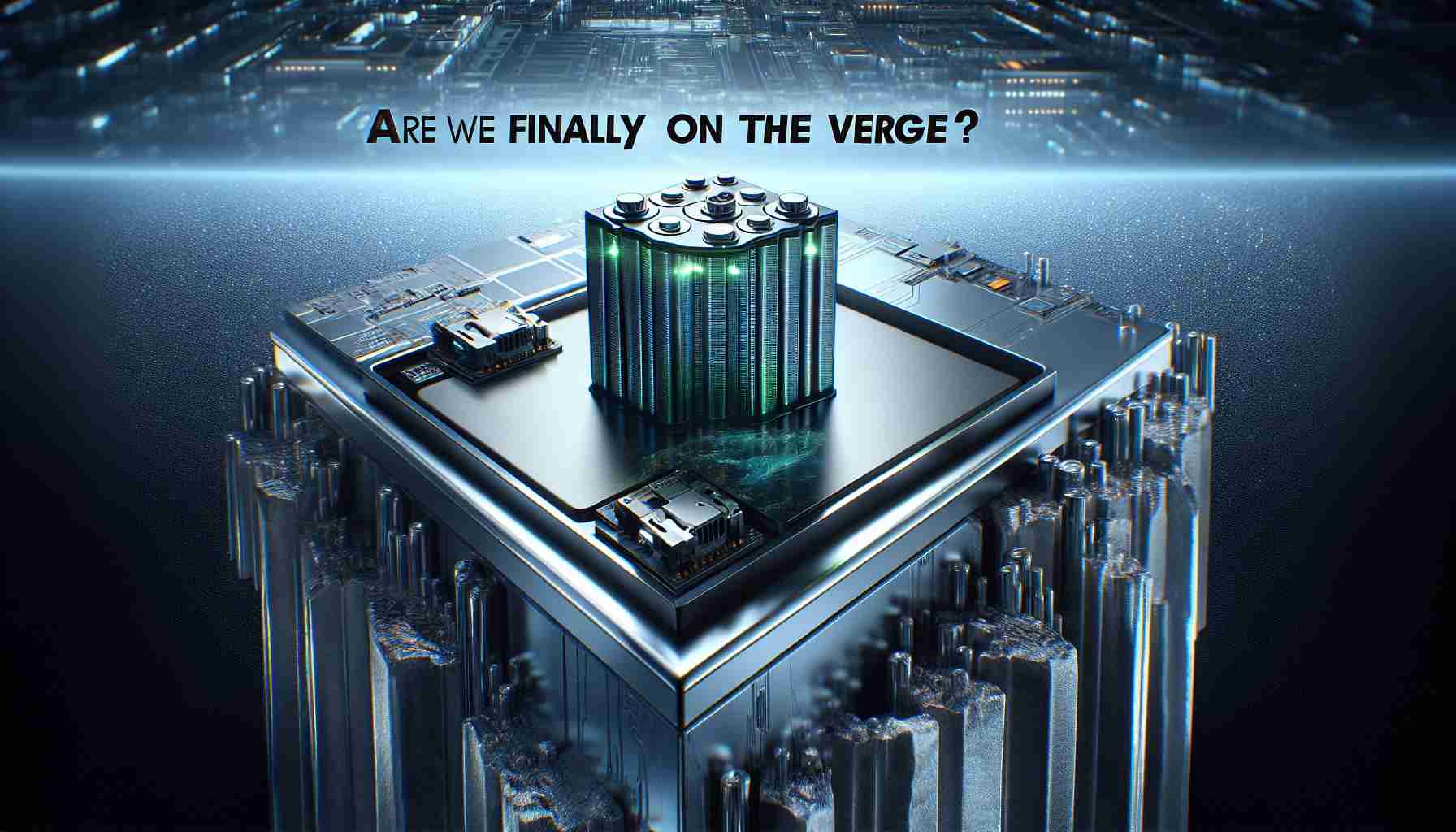- Solid-state batteries are approaching commercialization, promising to transform electric vehicles with improved range, faster charging, and enhanced safety.
- Semi-solid-state batteries, featuring gel-like electrolytes, will precede fully solid-state versions and are a critical step towards mainstream adoption.
- The new solid-state technology replaces traditional liquid electrolytes with more stable and efficient materials, boosting energy density and safety.
- Key players like Factorial, QuantumScape, and Solid Power, supported by major automotive firms such as Mercedes-Benz, Hyundai, Volkswagen, Ford, and BMW, drive innovation in this field.
- The transition to solid-state manufacturing is complex, requiring substantial changes in production methods akin to a technological revolution.
- While challenges remain, advancements in solid-state batteries are crucial for making electric vehicles more competitive with traditional combustion engines.
Solid-state batteries, long hailed as the elusive holy grail for electric vehicles, might finally be nearing their electrifying debut. For nearly two decades, these powerhouses promised to transform the EV landscape by boosting range, slashing charging times, and enhancing safety—offering a whisper of a future where an electric car outperforms its gas-guzzling counterpart in every meaningful way, minus the pollution.
Yet, these battery wonders seemed perpetually locked within scientific laboratories. Now, the tides are shifting. Experts assert that we edge closer than ever to the commercialization of solid-state technology. The market will first welcome semi-solid-state batteries, which harness gel-like electrolytes to bridge the leap to the fully solid versions poised to redefine EVs.
In this technological ballet, the solid-state battery trades the traditional liquid electrolyte for a robust solid, forged from polymers, sulfides, or oxides. This shift promises numerous advantages: learning faster charging, superior energy density, and uncompromised safety. Imagine eliminating the irksome range drops in frigid winters and quelling fire hazards, all within a compact battery.
The drive to actualize these promises is at fever pitch. Pioneers like Massachusetts-based Factorial partner with industry giants like Mercedes-Benz and Hyundai, fervently advancing this cutting-edge tech. QuantumScape enlists Volkswagen’s prowess, while Solid Power attracts Ford and BMW’s backing. Meanwhile, in Japan, Toyota and Honda engineer their own breakthroughs.
While Factorial’s recent unveiling of its high-energy-density Solstice model dazzled, the path ahead is complex. Transitioning to solid-state manufacturing demands a complete overhaul, akin to the seismic shift from ink to laser printing. Yet, this challenge might just be the propulsion needed to realize an electric future once confined to dreams.
This New Battery Technology Could Revolutionize Electric Vehicles!
How Solid-State Batteries Could Transform the Electric Vehicle Industry
Solid-state batteries have been heralded as the “holy grail” for electric vehicles (EVs) due to their potential to significantly enhance range, decrease charging times, and improve safety. As we edge closer to the commercialization of this technology, let’s dive deeper into the myriad facets of solid-state batteries that were not fully explored in the initial discussion.
Features, Specs & Pricing
Features of Solid-State Batteries:
1. Faster Charging: Solid-state batteries could potentially charge as much as 80% in just 15 minutes.
2. Improved Energy Density: They offer up to two to three times the energy density of conventional lithium-ion batteries, translating to longer driving ranges.
3. Safety: With solid electrolytes, the risk of flammability is significantly reduced.
Pricing Considerations:
The cost of production for solid-state batteries remains high due to their complex manufacturing process. However, advancements in technology and economies of scale are expected to reduce costs over the next decade.
Real-World Use Cases
Early Adoption: Luxury carmakers like BMW and Mercedes-Benz are expected to be the first to implement solid-state batteries, given the high initial costs that align more with premium vehicle pricing.
Extended Applications: Beyond EVs, solid-state batteries could revolutionize consumer electronics, with possibilities for slimmer, more efficient mobile devices and laptops.
Market Forecasts & Industry Trends
The global solid-state battery market is projected to grow significantly, with estimates suggesting a valuation of over $6 billion by 2030. This growth is driven by increasing demand for efficient energy storage and rising investments in EV infrastructure.
Pros & Cons Overview
Pros:
– Higher energy density and improved safety.
– Potentially faster charging times and longer lifespan.
– Reduced weight, leading to more efficient vehicle performance.
Cons:
– Current high production costs.
– Manufacturing challenges such as scaling and material sourcing.
– Longer development times compared to established battery technologies.
Controversies & Limitations
Solid-state batteries face limitations in terms of production scalability and the availability of materials. The technology is still emerging, with real-world validation needed to prove long-term reliability and efficiency.
Insights & Predictions
Industry experts predict that semi-solid-state batteries will act as a bridge, with full solid-state variants becoming more commercially viable by the late 2020s. Automakers may start incorporating hybrid systems first, allowing gradual transitions.
Actionable Recommendations
1. Stay Informed: Keep an eye on emerging trends and updates about solid-state batteries as pilot projects by major car brands go public.
2. Consider Hybrid Technology: If buying an EV soon, consider models that might offer hybrid solid-state features for better performance.
3. Invest in Innovations: For investors, tracking companies like QuantumScape and Solid Power could offer long-term opportunities in the renewable energy sector.
For more information on electric vehicles and battery innovations, visit Tesla or BMW.
With these insights and tips, you can be prepared for the electrifying future of electric vehicles powered by advanced solid-state batteries. Stay ahead of the curve and ready to embrace the revolution!














